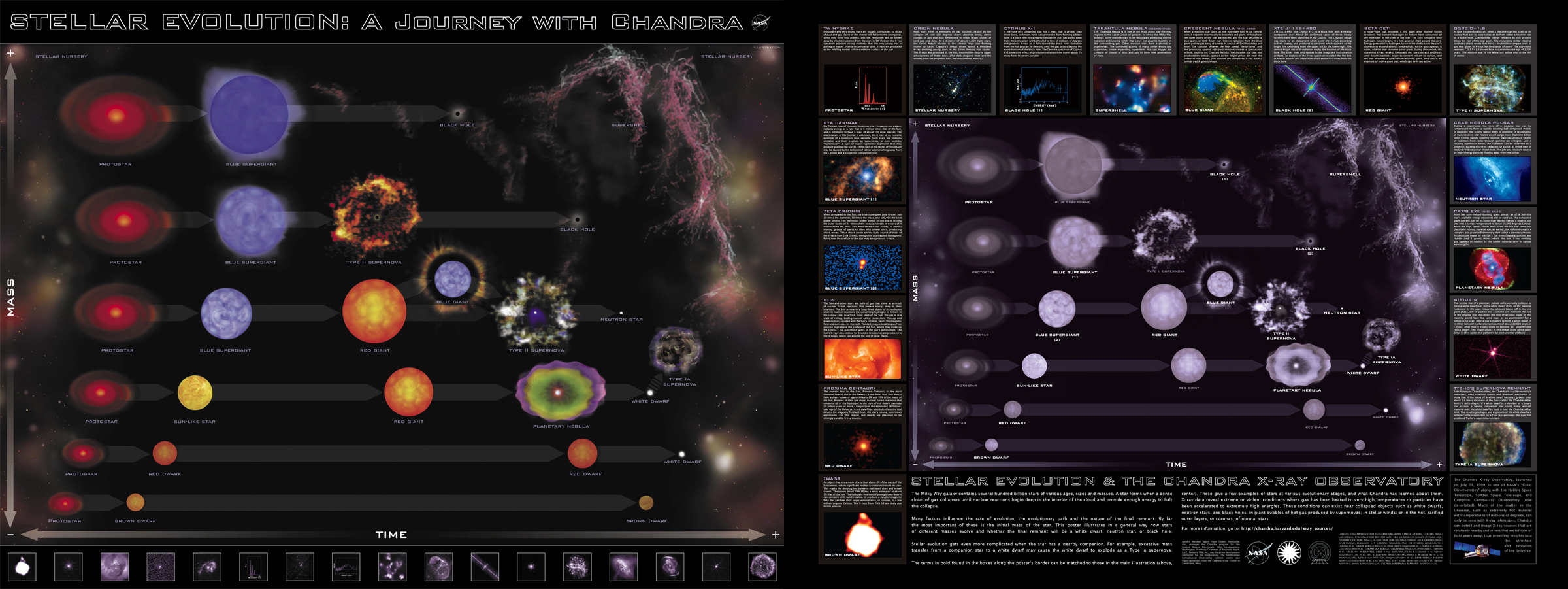It is now known, through a detailed study of the cooling times of white dwarfs in open clusters of known age, and through modelling of their progenitors, that white dwarfs arise from single main sequence stars of masses $< 7-10 M_\odot$. Only single star progenitors with mass $>1M_\odot$ have had time to become white dwarfs within the age of our Galaxy and appear to produce white dwarfs with mass around $0.5M_\odot$. The more massive white dwarfs progenitors produce white dwarfs of mass 0.5 to about $1.1M_\odot$. The upper limit is slightly uncertain; the most massive progenitors at $\sim 8-10M_\odot$ may leave $\sim 1.1-1.3 M_\odot$ white dwarfs made predominantly of oxygen and neon, rather than the more usual carbon and oxygen.
Lower mass progenitors will eventually produce less massive white dwarfs, which below $0.45M_\odot$ would be made mostly of helium. He white dwarfs are found now, but these are the products of binary stellar evolution involving the transfer of mass between stellar components. As may be judged from the difference between the white dwarf mass and progenitor mass, all white dwarf formation involves significant mass loss; this occurs chiefly in the red giant and asymptotic giant branch phases of stellar evolution.
More massive progenitors will leave behind neutron stars and black holes. The exact dividing line between stars which produce either is still theoretically uncertain. It also depends on stellar composition, particularly the metallicity that determines the amount of mass loss a progenitor will suffer; rotation; and magnetic field.
In most models I have seen, the least massive progenitors, say $10-20M_\odot$ will leave neutron star remnants of mass $1.2-2.5M_\odot$ (the upper limit having a significant uncertainty), whilst more massive progenitors leave proto neutron stars that either collapse into black holes when more material falls back onto them, or directly collapse into a black hole because they cannot be supported as neutron stars. Black hole remnants appear (so far) to be more massive than $\sim 5M_\odot$.
There is likely to be an upper limit to the mass of a star that will leave any remnant. The star may blow itself up entirely in a pair instability supernova in progenitors with mass greater than around $130-140M_\odot$, leaving no remnant, and should leave an upper limit of around $50-60M_\odot$ for black holes produced by core collapse. It is possible that stars more massive than about $250M_\odot$ may again be able to leave behind more massive $(> 100M_\odot)$ black holes, but such progenitors would need to be metal-poor to form in the first place.
There are lots of details still to be worked out - the exact form of the initial-final mass relation in white dwarfs and how it depends on metallicity; the exact boundary progenitor masses for C/O Vs O/Ne white dwarfs; the boundary masses between progenitors that produce neutron stars vs black holes and how that depends on composition and rotation; the upper mass limit for neutron stars; the lower mass limit for black holes and whether there is an upper limit caused by pair instability supernovae.
In terms of summaries - well the above is my version; the summaries and further reading (i.e. the references) provided by the Wikipedia pages on white dwarfs, supernovae, pair instability supernovae and "mass gaps" also provide an eminently sensible story. Specifically, you could start by looking at Heger et al. (2003) on the fates of massive stars; Kalirai et al. (2008) who discuss white dwarf progenitors; Spera et al. (2015) who provide a theoretical perspective and the review of supernovae and their remnants by Limongi (2017), from which the plot below is taken, showing final remnant mass versus progenitor mass at two different metallicities reflecting the present day or the early universe.

Concerning some of your more specific questions (and perhaps you should ask more specific questions separately), all white dwarfs will have passed through red giant and asymptotic red giant phases. This will be the fate of the Sun in just over 7 billion years time. It should undergo significant mass loss, which will likely result in a planetary nebulae when it leaves behind a hot, $\sim 0.5M_\odot$ carbon/oxygen white dwarf (e.g., Schroeder & Connon Smith 2008). Progenitors massive enough to leave neutron star and black hole remnants can have very complex evolutionary histories depending on their composition, rotation and binary status - becoming red and/or blue supergiants, Wolf-Rayet stars or luminous blue variables.


